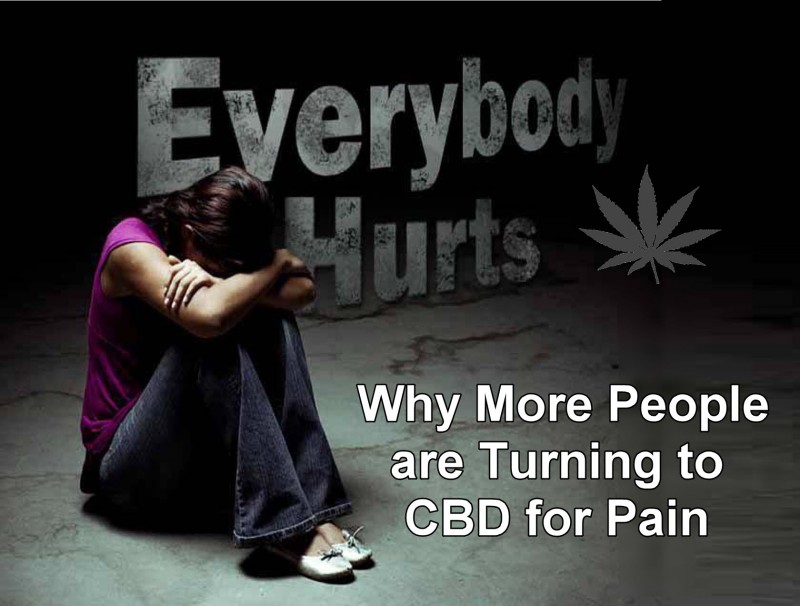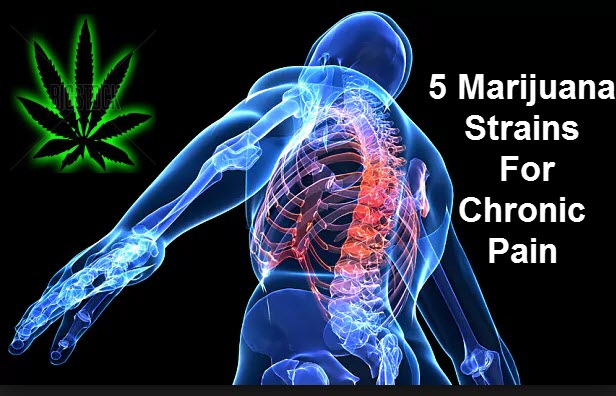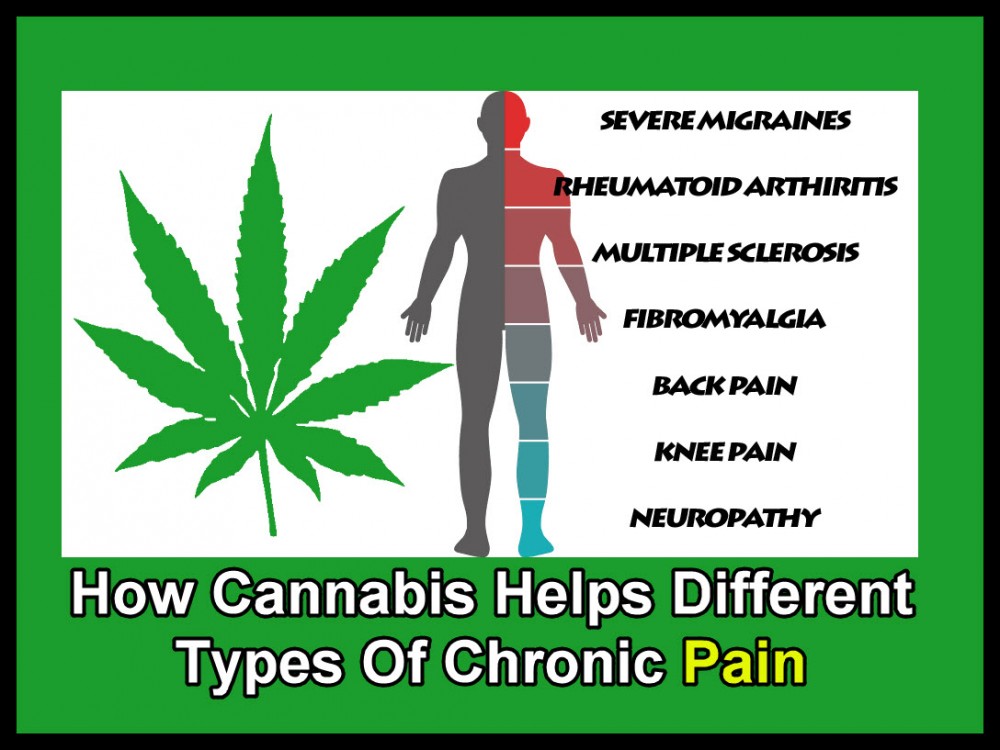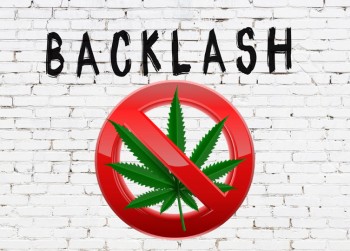Everybody Hurts: Why More People Are Turning To CBD For Pain
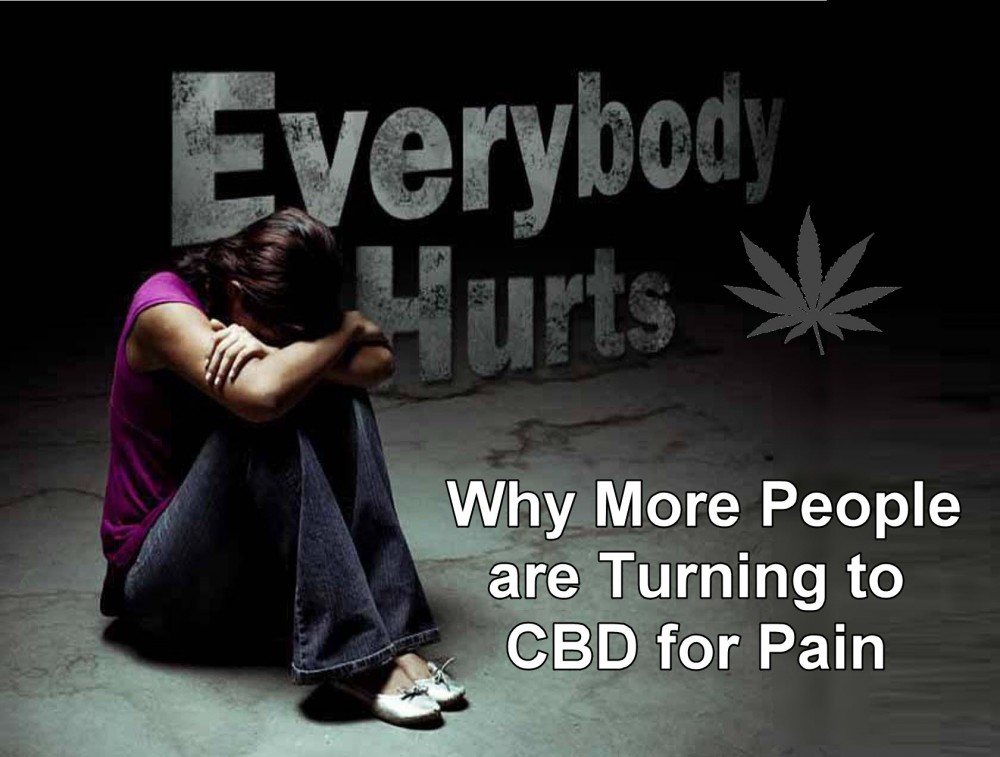
Chronic pain is a silent killer: it not only debilitates people, but often, it becomes painful enough to result in half a trillion dollars in medical costs annually.
Pain also leads to lost productivity and an increase in disability programs.
The opioid crisis of the United States took the lives of over 72,000 Americans in 2017, and with 50 million Americans suffering from chronic pain, there is clearly a need for a natural solution.
Thankfully, there’s CBD.
Cannabidiol is the new superstar of the cannabis industry, and these days more people are turning to it to treat everything from headaches and epilepsy to chronic pain.
A recent study revealed that from 62% of people who use CBD for a medical disorder, a majority of them are using it to treat chronic pain, as well as joint pain and arthritis.
“I think there’s definitely a lot of excitement about medical marijuana,” explains Kevin Boehnke, Ph.D., a researcher at the University of Michigan’s Chronic Pain and Fatigue Research Center. “It’s always nice to have an extra tool in the toolbox, especially one that has been used for thousands of years and that people know to be relatively safe.”
What’s interesting is that the researchers explain what exactly pain is: “In the research group that I’m part of, we think of pain as coming in three different flavors,” Boehnke says. “One of them is neuropathic pain, and that’s caused by damage to or inflammation of the nerves.” Examples of these include sciatica or carpal tunnel syndrome.
“Then there’s acute, or nociceptive, pain,” he says. Acute pain usually occurs after tissue damage or an injury.
“Lastly, there is centralized pain, which has very recently been called nociplastic,” Boehnke says. “And that’s something more like fibromyalgia or some of the other chronic overlapping pain conditions – migraines, tension headaches – that have been more difficult to characterize scientifically and clinically because there’s not a specific pathology that you can identify on an x-ray or fMRI.”
These various kinds of pain mean that people don’t react to medications similarly. This is what makes it difficult to pinpoint how CBD treats pain.
“There’s a lot of studies that have been done in animals and those tend to show that it’s anti-inflammatory and that it does have some analgesic effect,” Boehnke explains. “Unfortunately they haven’t been well translated in humans.”
That doesn’t mean that there are no studies backing up the efficacy of CBD for pain; it’s just that those we do have, are focused on the combination of CBD with THC. “It seems like if you take them together, you can tolerate more THC without having the same types of side effects,” he explains. “Also, taking CBD and THC together, compared to a similar amount of THC alone or CBD alone, seems to have better analgesic effects.”
But who really needs studies to back up these claims? Everyday, more people are discovering the powerful analgesic effects of CBD, and that’s saying a lot for its ability to save lives (and money).
1 In 7 Americans Now Using CBD
Americans continue to use CBD, despite the fact that it still isn’t regulated.
A recent Gallup poll just revealed that 14% or 1 in every 7 Americans is using CBD in a certain form, mostly for medicinal purposes. The poll involved surveying over 2,500 adults over the phone, which took place from June 19 to July 12, cementing the increasing popularity of CBD throughout the country particularly since the Farm Bill was legalized in December 2018.
Adults and young people located in the West are more likely to turn to CBD, with around 20% of them admitting to using CBD in some form. However, people from all over and in every demographic are already utilizing CBD’s therapeutic benefits.
The survey also found that 1 in 10 people aged 65 and up are using CBD.
Additionally, the Gallup poll surveyed respondents about the reasons they are using CBD. They found that most people use it for therapeutic purposes, with 40% of respondents using CBD to manage pain, 20% for treating anxiety, 11% for insomnia, 8% for arthritis, and the rest for headaches and stress.
Medicinal use made up 90% of all the feedback, and they found just 5% of the participants use CBD for recreational purposes.
GOT PAIN? READ THIS...
CANNABIS STRAINS FOR CHRONIC PAIN, CLICK HERE.
OR..
CHRONIC PAIN AND CANANBIS - LEARN MORE, CLICK HERE.
